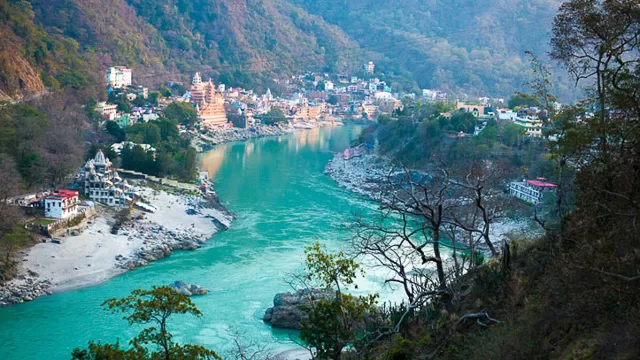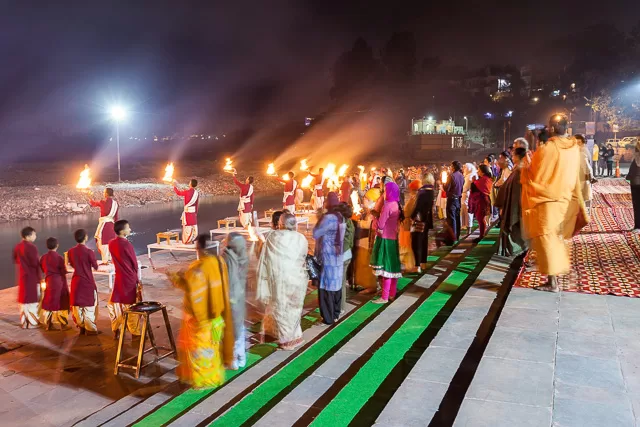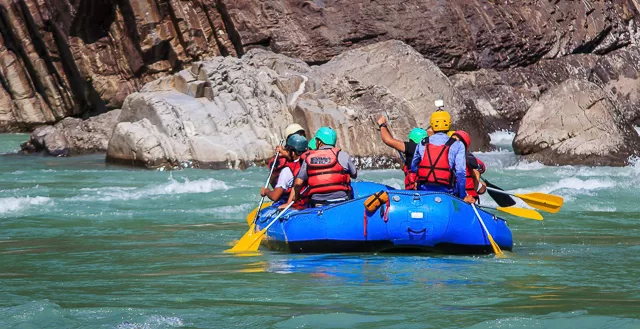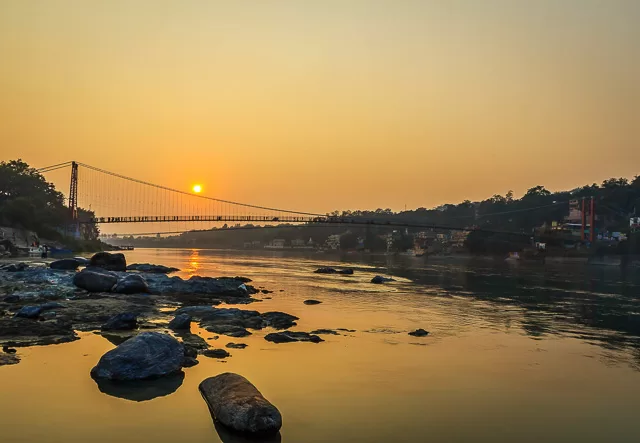About
Top Experiences
Type of Journey
Subscribe to newsletter and stay updated
Read about our travel expeditions, new destinations, new pictures, latest trip schedules
The meaning of Rishikesh is “God of all senses.” The city’s name gives equity to the city. Rishikesh can fulfill all the desires of an explorer, ranging from thrill to tranquility. Every tourist has a different purpose in mind. This old city stands up to all desires. As a cherry on the cake, it offers tourists the taste of the Garhwal Himalayas and the Ganges.
Imagine going to a city that has holiness, peacefulness, flawless landscapes, historical spots, daring rides, and loads of culture. Rishikesh is such a city. It is also known by the names ‘Yoga Capital of the Country’ and ‘Passway to the Garhwal Himalayas’.
Rishikesh has many spots that one must visit before ending the tour. These places leave the tourists in awe of the city most of the time. The spots include sanctuaries, Ganga Ghats, ashrams, yoga retreats, mountains, and so on. Rishikesh has both tranquility and thrill and thus something outstanding for each taste bud.
Tourists, not only from India but also from abroad, always visit Rishikesh. Tourists include pilgrims too, all of whom come from various walks of life. The varying cultures that the tourists carry with them and how they adjust to those of the city can be one way of life in the city. Rishikesh ashrams are the dominant reason tourists visit this place. This helps them learn Rishikesh yoga and meditate. However, the Himalayas pull in nature lovers, rides attract those with a knack for adventure, and sanctuaries pull in history sweethearts, etc.
OVERVIEW
Location: Uttarakhand
Nearest Airport: Dehradun
How to reach: by air/road/train
Famous for: Yoga Ashrams, River Ganges, Temples and Adventure Sports
Best time to visit: October-November
WHAT TO SEE
Lakshman Jhula,
Ram Jhula,
Parmarth Niketan Ashram,
Triveni Ghat
Most historians agree that Rishikesh is 4000 years old. Skanda Purana mentions Rishikesh with the name Kedarkhand. According to it, a saint, Rabhya Rishi’s Tapasya (penance), near the Gange under the tree (most likely a mango), moved Lord Vishnu. He disguised himself as Hrishikesh and met Rabhya Rishi as a reward. It did not take long for Kedarkhand’s name to change and become Hrishikesh. Over time, it became Rishikesh.
The local saints think that the demon Madhu faced defeat by Lord Vishnu here. Lord Agni (fire) is said to have made penance to Lord Vishnu here only.
An alternate view based on the Sthala Purana is that Rabhya Rishi remained near the bank as a plant. The plants looked like the locks of his hair. Hence, the names Rishi (sage Rabhya Rishi) and Kesh (hair locks), Rishikesh.
A leader, Adi Shankaracharya, who was mainly religious during the contemporary period, visited Rishikesh. After his visit, Rishikesh became a pilgrimage and eventually a tourist destination.

Culture:
The culture of the city is more or less like any other city in India. The difference is that Rishikesh is one of the pilgrimages for Hindus. The culture is thus dominated by the customs of the Hindus. All major Hindu festivals, like Holi and Diwali, are celebrated on a grand scale here.
The locals speak Garhwali and Hindi. As it is a sacred place, non-vegetarian food is not available here. However, vegetarian food has a lot of variety and is delicious.
The people living in Rishikesh are very tourist-friendly. Tourists can be spotted throughout the year in Rishikesh. But it is certainly overcrowded from May to June and October to January. Tourism is one of the major sources of revenue for Uttarakhand.
Places of Interest:
Laxman Jhula and Ram Jhula: As the name suggests, this jhula finds its significance in Hindu mythology. Laxman Jhula and Ram Jhula are hanging bridges that hang over the Ganga. As per Hindu mythology, Ram and Laxman crossed the Ganga at the same place where the bridges were built. They are major tourist attractions in Rishikesh.
Neelkanth Mahadev Temple: This Shiva temple is a sacred pilgrimage spot. It has magnificent architecture. The name of the temple is derived from the mythological story that Lord Shiva drank the poison that turned his throat blue on the premises of this temple. The major rush for this temple occurs during Shrawan and Shivratri.
Triveni Ghat: Triveni comes from ‘tri, meaning three. It’s a confluence of the rivers Ganga, Yamuna, and Saraswati. Worshippers take a dip in the river since they believe it washes away their sins and makes them pure. A maha-arti takes place every morning and every evening at the bank of the river.

The Beatles Ashram: This Rishikesh Ashram was established by a Yogi who taught meditation. Back then, it was Chaurasi Kutia. In 1986, the Beatles stayed in this ashram, which explains the hype and the name. The other major attraction of this Rishikesh ashram is its dome-shaped construction and the graffiti. It is a spiritually rich place.
Swarg Ashram: If one is in Rishikesh for mental peace, then this Rishikesh ashram is truly Swarg (heaven). Practicing and learning Rishikesh yoga are major attractions for this ashram. It provides medical facilities to the saints and also to the pilgrims. Moreover, it gives free education on religious subjects to tourists.
Rishi Kund: ‘Rishi’ means sage, and ‘kund’ means pond, the pond of the sage. The water is naturally hot. The most common belief regarding this is that it was a havan kund earlier. While some folklore tellers believe that it was Lord Rama’s bathing place. It is within walking distance of Triveni Ghat.

Nearby Attractions:
Haridwar: Haridwar is one of the seven pilgrimages for Hindus. The Maha Kumbh Mela, held every 12 years, is held in this city. Travelers also visit Haridwar for its authentic cuisine and ashrams.
Rajaji National Park is not only a national park but also one of the two tiger reserves in Uttrakhand. Other than tigers, it has many elephants and leopards. One can visit it only during November through June. On days the park is open, it follows strict visiting hours. However, one can book a full-day safari.

Other Attractions:
Evening Prayer Ceremony at the River Ganges (Triveni Ghat): Maha-Arti is held every morning and evening at the banks of rivers on Triveni Ghat. The art here is like no other. It is so grand and beautiful that it can transport one to the state of Nirvana.
Bungee Jumping: Bungee jumping can be ticked off the list in Rishikesh. Rishikesh has the highest jumping platform in India. The instructors are well-trained to ensure safety.
River Rafting: Rishikesh is the best city for river rafting in India. Rafting length can be chosen from three options. It is open for visitors throughout the day (7 am – 10 pm).